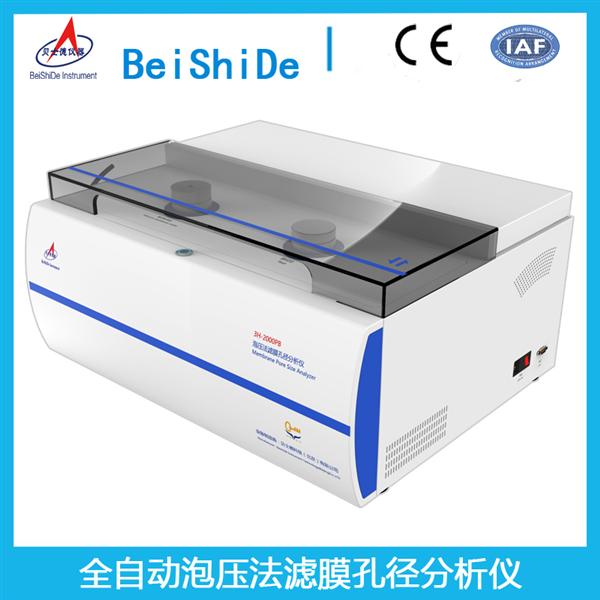When it comes to analyzing the pore size of materials, several techniques are available, such as nitrogen adsorption, mercury intrusion, and bubble pressure testing. However, for membrane materials, the most effective and widely accepted method is the bubble pressure technique (also known as the gas-liquid flooding method). Here's why:
1. Limitations of Nitrogen Adsorption
Nitrogen adsorption is commonly used for pore size analysis, but it has significant drawbacks when applied to membranes. First, its effective range is between 0.35 nm and 500 nm, which makes it unsuitable for measuring micrometer-sized pores. Second, the results can be unreliable due to the smooth surface of the membrane, leading to low adsorption capacity and large measurement errors. Third, this method tests both through-pores and blind pores, whereas the critical parameter for membranes is the throat diameter—the narrowest point of the pore. As a result, nitrogen adsorption often provides inaccurate data for membrane characterization.
2. Disadvantages of Mercury Intrusion
Mercury intrusion is another technique that covers a wider range—typically from 50 nm to 500 µm. However, it requires very high pressures (often exceeding 20 MPa) to force mercury into smaller pores, which can damage the membrane structure under such extreme conditions. This may lead to deformation or even destruction of the sample, making the results less reliable. Additionally, like nitrogen adsorption, mercury intrusion measures both through-pores and blind pores rather than focusing on the throat diameter, which is crucial for membrane performance.
3. Advantages of the Bubble Pressure Method
The bubble pressure method offers several advantages. It can measure pore sizes ranging from 10 nm to 500 µm, covering both small and large pores effectively. This method not only determines the minimum and maximum pore sizes but also provides information about the average pore size, pore size distribution, and permeability. The principle behind the technique involves applying a controlled pressure across the membrane, which displaces the liquid in the pores and allows the determination of the throat diameter. This approach is recognized as a standard method by ASTM for membrane testing.
The 3H-2000PB Bubble Pressure Membrane Pore Size Analyzer is a popular instrument used for this purpose. It utilizes the gas-liquid drainage technique to measure pore characteristics accurately and efficiently. This method ensures minimal stress on the membrane material, typically operating at pressures below 0.1 MPa, making it ideal for delicate samples.

Ceramic Heater Bracket Holder,Alumina Ceramic Element,Ceramic Spacer Block,Ceramic Spacer
Yixing Guangming Special Ceramics Co.,Ltd , https://www.yxgmtc.com
![<?echo $_SERVER['SERVER_NAME'];?>](/template/twentyseventeen/skin/images/header.jpg)